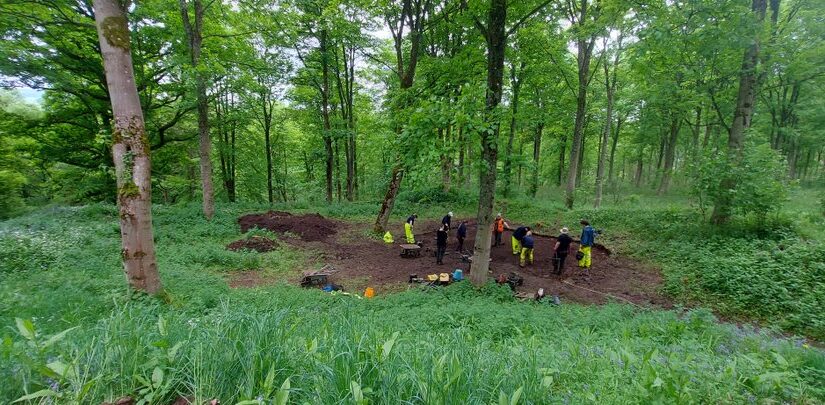After a bit of a hiatus, co-project lead, Dr Sophie Ambler, gives an update of how the excavations at Lowther Castle went with some possible dating evidence.
Weeks two and three of the Lowther Medieval Castle project brought significant progress, both in excavating a significant portion of the ringwork castle interior and ‘watchtower mound’, and in producing some long-hoped-for finds.
Subscribe to our quarterly newsletter
Trench Seven explored the so-called ‘watchtower mound’, the protrusion of the bank at the ringwork’s south-eastern corner, overlooking the attached settlement to the east, which may have afforded the castle’s occupants an elevated view over the settlement. The trench revealed a compacted stony surface that likely represents a foundation levelling layer. No evidence has been found of a structure having stood on this mound, although it may be that postholes or other evidence of a timber palisade may have been lost over the years to slippage. Soil samples were taken from across the trench and will be tested this week for environmental evidence. Meanwhile, as noted in the last dig diary, the trench had already yielded an equine fetlock joint, which can hopefully be radiocarbon dated.
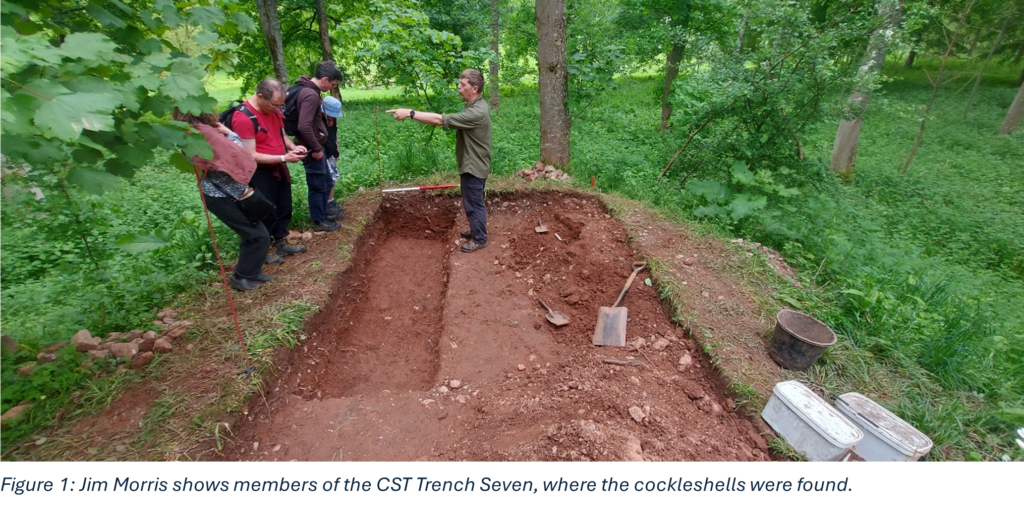
The final stage of excavation in Trench Seven also revealed further intriguing evidence of activity: two cockleshells, again from a secure context. Cockles are abundant in the bays and estuaries of Cumbria’s coast. Although Lowther is thirty to forty miles from the coast, the presence of cockles is not as unlikely as it may first seem. Excavations at other inland castle sites have shown evidence of bivalve consumption. For instance, a significant assemblage of bivalve shells from across the medieval period has been found at Dudley Castle in Worcestershire, comprising mostly oysters but also cockles, mussels and whelks. Oysters formed the focus of a recent analysis, which revealed that these made up perhaps more than ten per cent of dietary intake at Dudley in the final quarter of the eleventh century (a much higher percentage in the fourteenth century). The challenge of transporting such produce quickly to inland sites made it something of a luxury foodstuff, but one that was clearly popular for castle-holding elites. (Thomas et al, 2018).
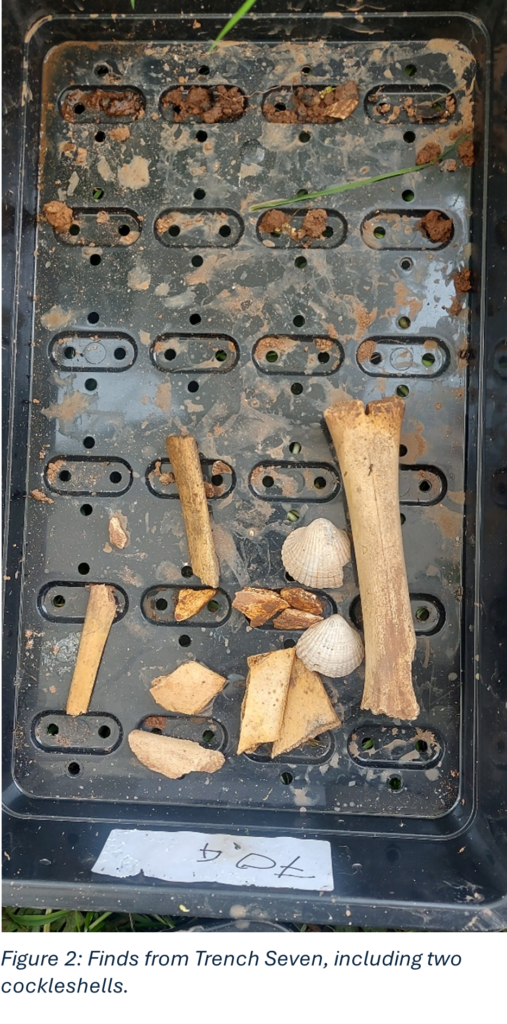
Meanwhile, Trench Six, which covers a significant portion of the ringwork castle interior, has yielded several pottery sherds. These were also found in a secure context, here the ringwork’s bank, by the entranceway. The study of medieval pottery in the North West is challenging due to the relative lack of securely datable evidence. This is especially true in Cumbria, which is generally finds-poor for the Middle Ages and where pottery from rural settlements (as opposed to Carlisle) has been less studied. Still, comparators can be found in the pottery assemblage at Cumwhinton, a rural medieval settlement about twenty miles north of Lowther that may have been home to pottery production. Lowther’s sherds appear to be ‘gritty ware’, a utilitarian fabric, most examples of which are from jars and jugs (and occasionally small dishes). This was the dominant fabric used across the north of England in the twelfth century and the earliest form of post-Conquest pottery in Cumbria. (Railton et al, 2014).
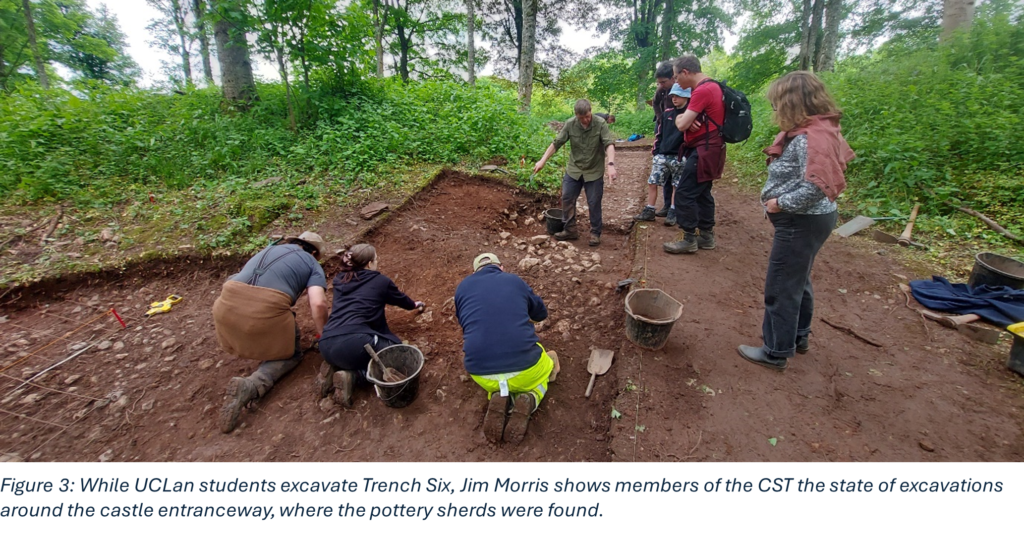
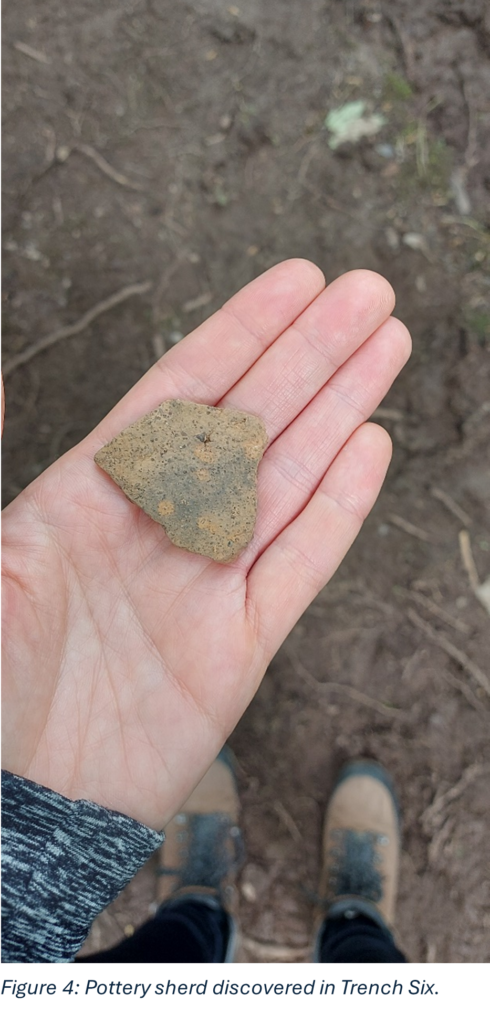
Although not definitive dating evidence yet, these finds are contributing significantly to our evidence base, which will help us to date our site and build its biography. We also hope that analysis now being undertaken in UCLan’s archaeology labs will continue to contribute to this evidence base. This includes analysis of soil samples, which may yield environmental evidence, and of finds, including animal bone and the pottery sherds. Watch this space for an ongoing report!
Subscribe to our quarterly newsletter
References:
Thomas et al, 2018: Richard Thomas, Matt Law, Emma Browning, Alistair Hill and Rachel Small, ‘The Changing Exploitation of Oysters (Ostrea edulis L. 1758) in Late Medieval and Early Modern England: A Case Study from Dudley Castle, West Midlands’, Environmental Archaeology 25 (2020), 82-95
Railton et al, 2014: Martin Railton, Jeremy Bradley, Ian Millar, Meagan Stoakley, David Jackson, Don O’Meara and Alan Hall, ‘Peter Gate, Cumwhinton: Archaeological Investigation of a Medieval Rural Site’, Transactions of the Cumberland & Westmorland Antiquarian & Archaeological Society 14 (2014) 63-102.
